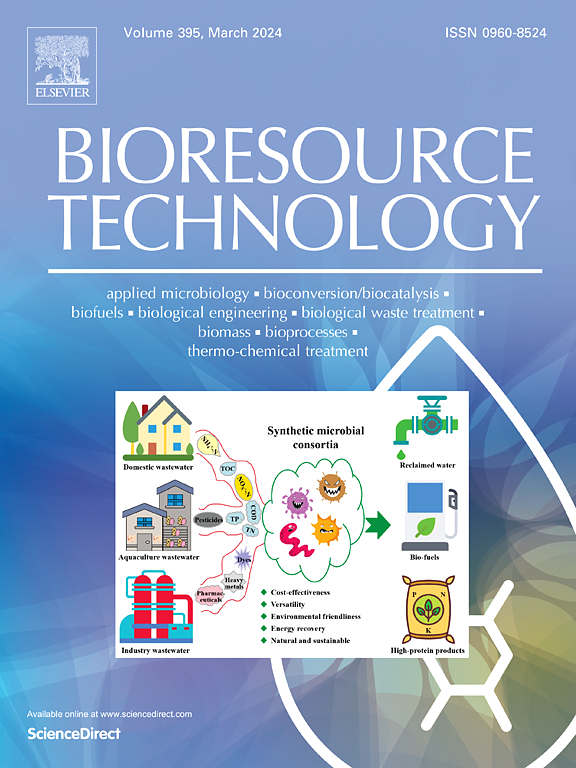Response of aerobic denitrification system to long-term stress of sulfamethoxazole, erythromycin and ofloxacin in oligotrophic water
IF 9.7
1区 环境科学与生态学
Q1 AGRICULTURAL ENGINEERING
引用次数: 0
Abstract
The responses of aerobic denitrification system to long-term stress of sulfamethoxazole (SMX), erythromycin (ERY) and ofloxacin (OFL) were investigated under low, middle, and high antibiotics stress. Findings showed that the aerobic denitrification performance was enhanced by antibiotics, and was higher than control system. Meanwhile, nitrate removal efficiency reached 43.01 ∼ 53.82 %, 29.48 ∼ 47.83 %, and 19.53 ∼ 34.08 % from low to high antibiotics stress in low carbon/nitrogen (C/N) ratio water. The α-diversity (ACE, Chao, and Shannon index) tended to increase for middle and high antibiotic stress. The PCoA and NMDS indicated that communities exhibited significantly difference (P < 0.001) under different antibiotics stress, which were agreement with the results of Adonis and ANOSIM. Acidovorax, Zoogloea, Bdellovibrio, Paracoccus, Piscinibacter, Pseudomonas, and Rhizobacter dominated the aerobic denitrification bacteria. Moreover, stochastic processes decreased gradually with increasing antibiotics. Furthermore, the results of network demonstrated that increase of antibiotics concentration could obviously reduce the microbial stability.

求助全文
约1分钟内获得全文
求助全文
来源期刊

Bioresource Technology
工程技术-能源与燃料
CiteScore
20.80
自引率
19.30%
发文量
2013
审稿时长
12 days
期刊介绍:
Bioresource Technology publishes original articles, review articles, case studies, and short communications covering the fundamentals, applications, and management of bioresource technology. The journal seeks to advance and disseminate knowledge across various areas related to biomass, biological waste treatment, bioenergy, biotransformations, bioresource systems analysis, and associated conversion or production technologies.
Topics include:
• Biofuels: liquid and gaseous biofuels production, modeling and economics
• Bioprocesses and bioproducts: biocatalysis and fermentations
• Biomass and feedstocks utilization: bioconversion of agro-industrial residues
• Environmental protection: biological waste treatment
• Thermochemical conversion of biomass: combustion, pyrolysis, gasification, catalysis.
 求助内容:
求助内容: 应助结果提醒方式:
应助结果提醒方式:


